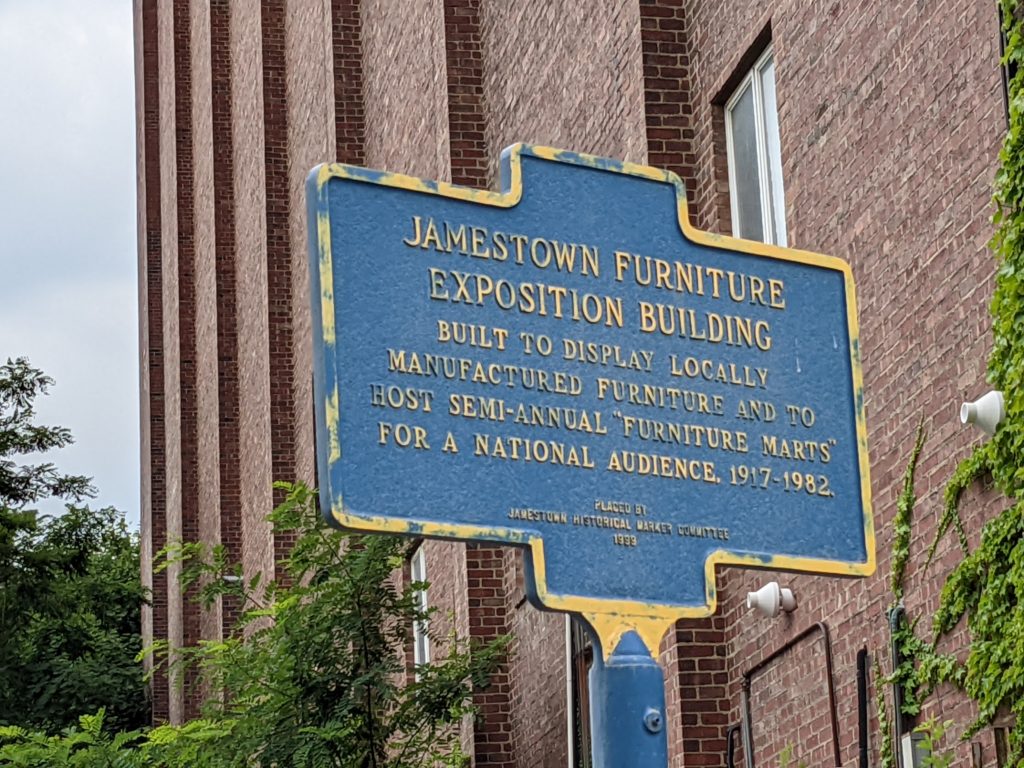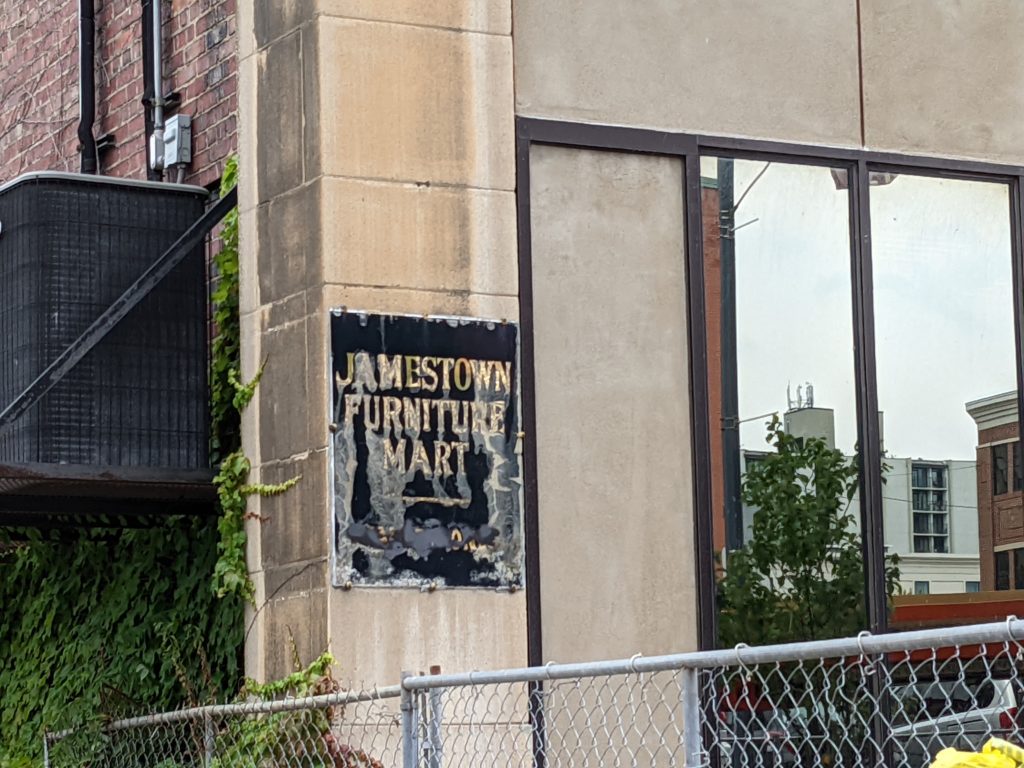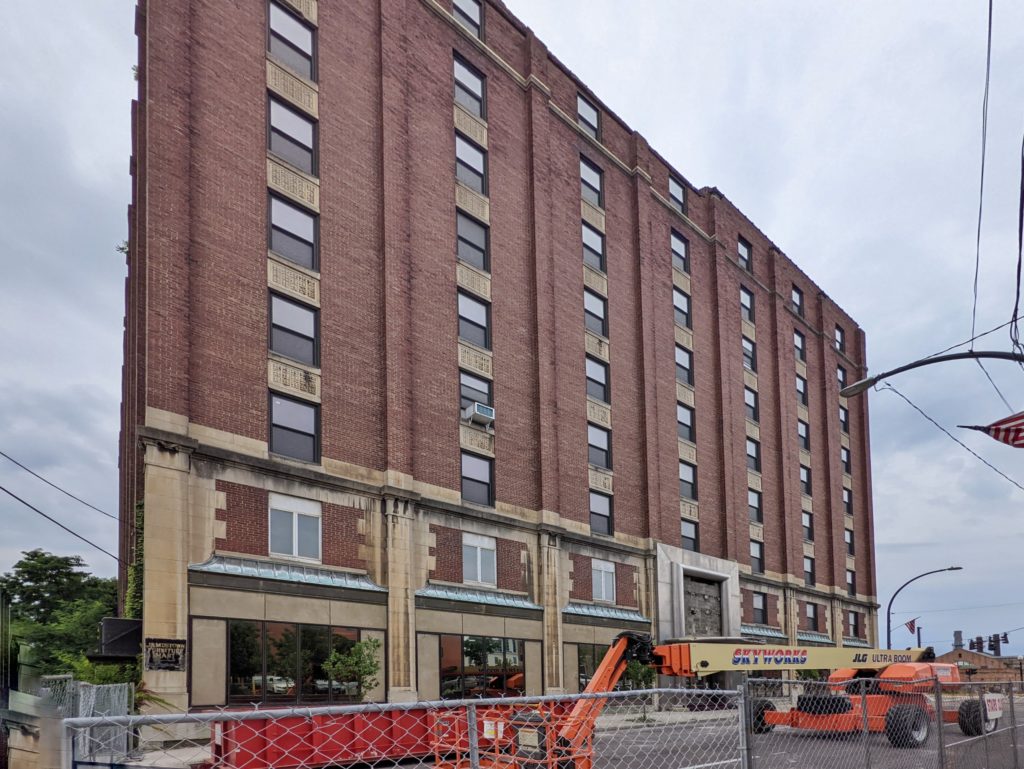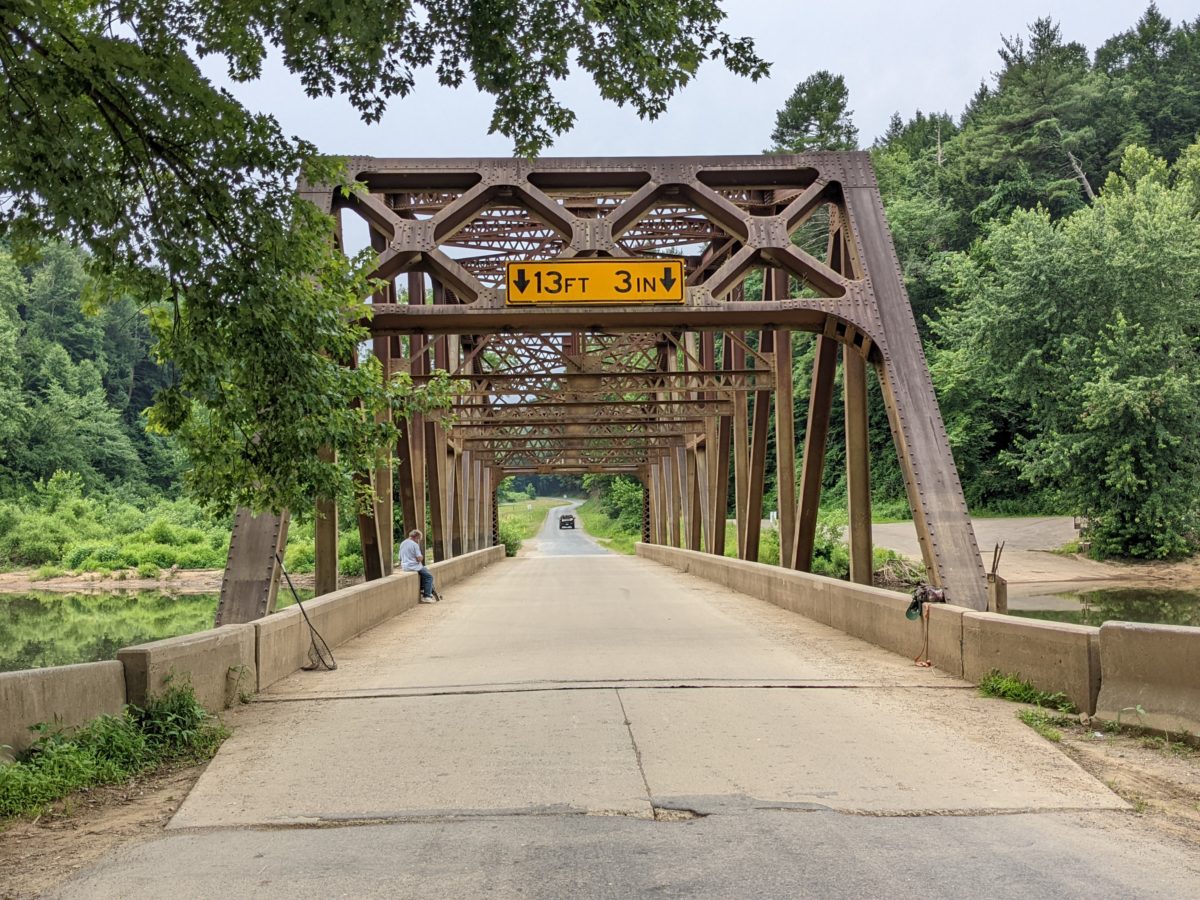The final rally day is always a case of mixed emotions.
Relief: You’re glad you only have a few more stops to make before the rally is done and over with. You’re physically tired, mentally spent, and just want the day to end.
Regret: Despite all the miles you’ve clocked and your exhaustion level, you realize you’re going to miss it, and miss all the other friends you’ve made on the rally.
So, we’re in Pennsylvania now. I stayed at a hotel in Cranberry Township, a bit north of Pittsburgh (since prices nearer the big city were outrageous), so I didn’t encounter anyone else until I headed out on the first checkpoint of the day.
Butler, Pennsylvania. Birthplace of the Jeep. Commemorated by another historical marker.
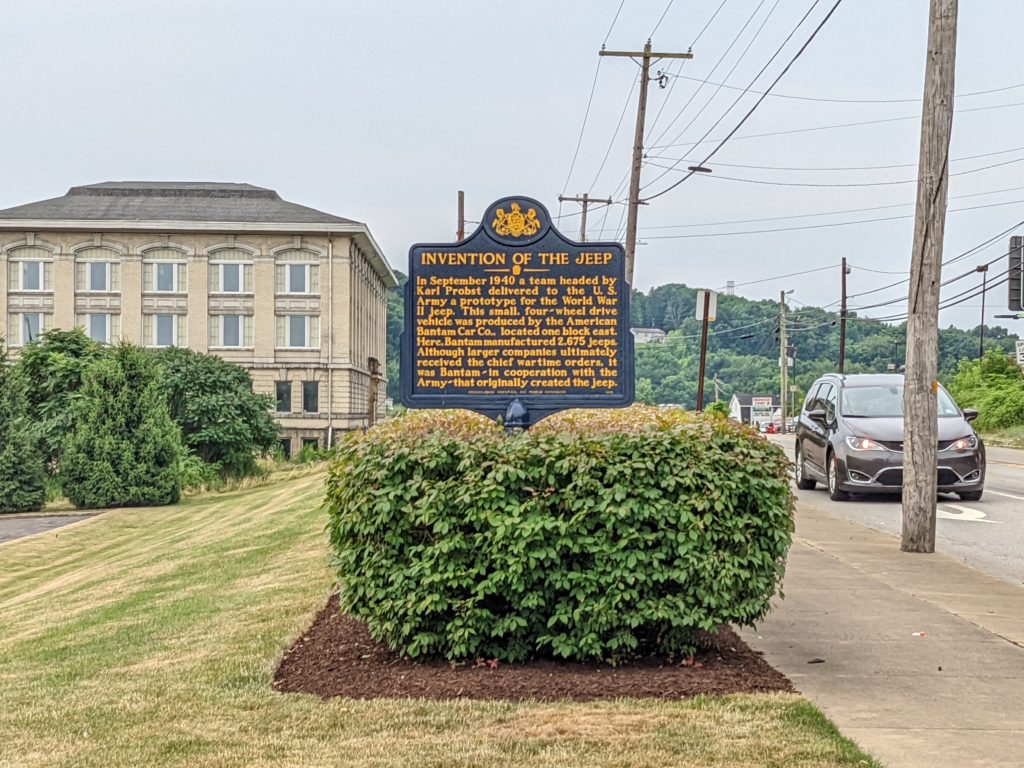
Our “Find It” mystery of the day was to locate the marker of an eccentric Hall of Fame baseball pitcher who chased firetrucks during games, wrestled alligators, and grew up north of Pittsburgh. Located at the entrance to a school parking lot, I found this marker for American League pitcher George “Rube” Waddell in Prospect, PA.
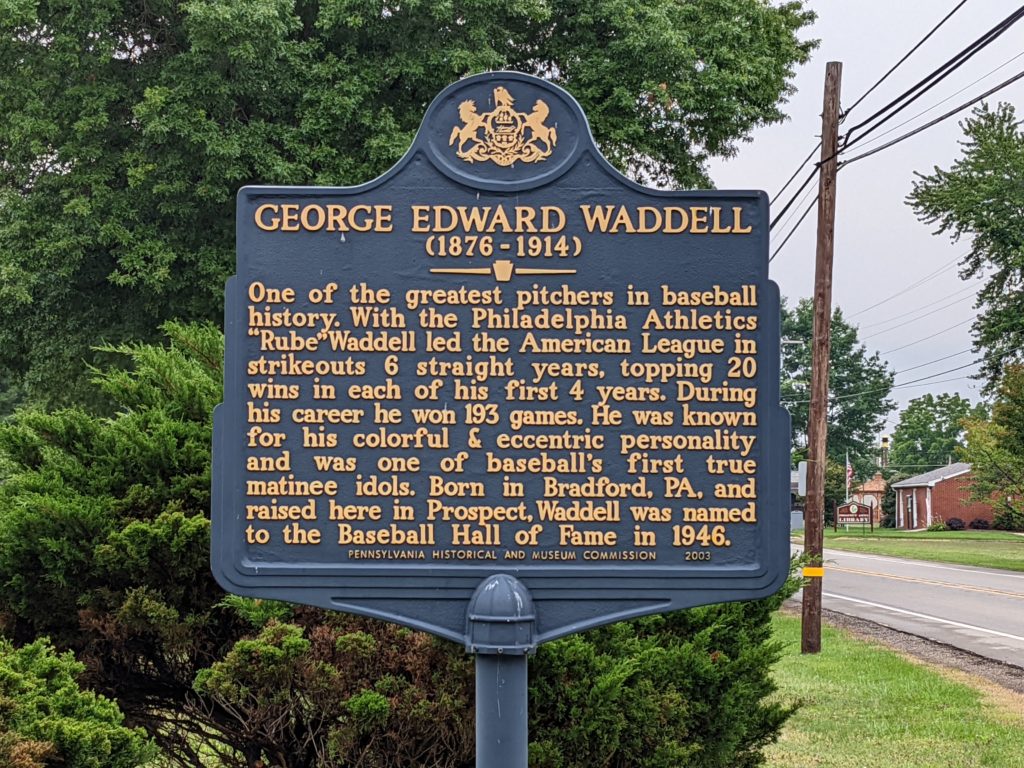
Pithole City was a boomtown that rose up briefly around oil prospectors. Oil was struck nearby and as many as 15,000 people came to the hillside to strike it rich. But as the price of oil dropped and the suspected “ocean” of oil was nothing more than a puddle, everyone left town and the buildings were scrapped. A few remnants were left behind, and a visitors center and museum was built at the top of the hill.
That pithole, by the way, was a crack in the ground that emitted a strange odor, which people of the day thought was a portal to Hell. The crack still exists, but is located on private property.
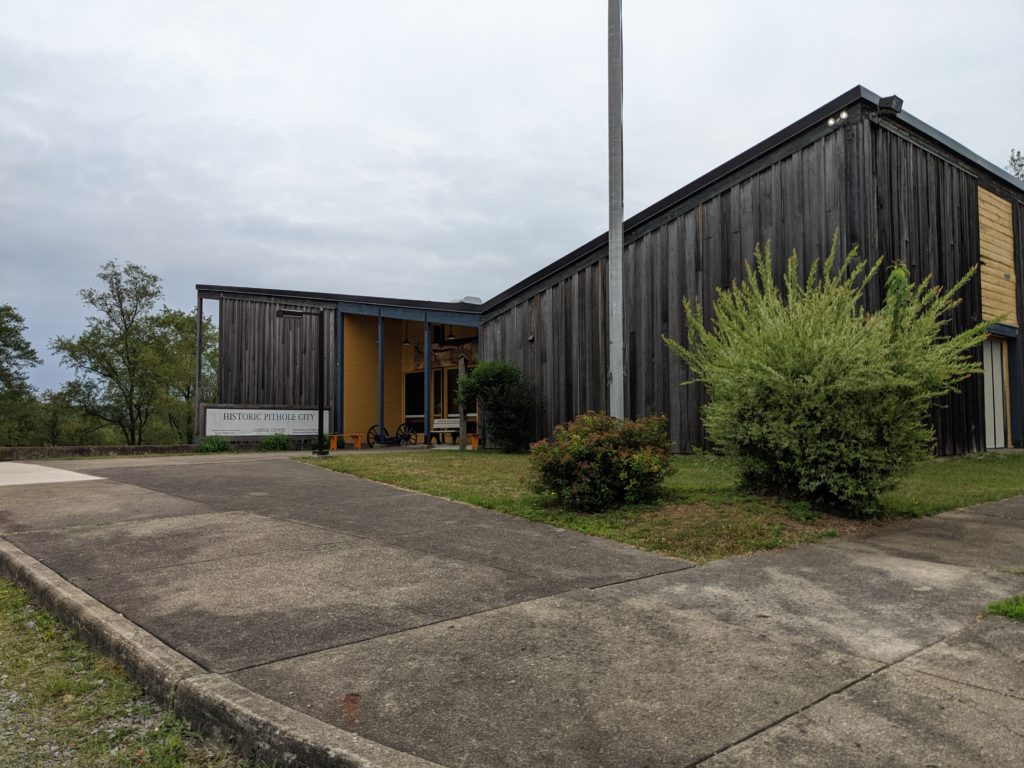
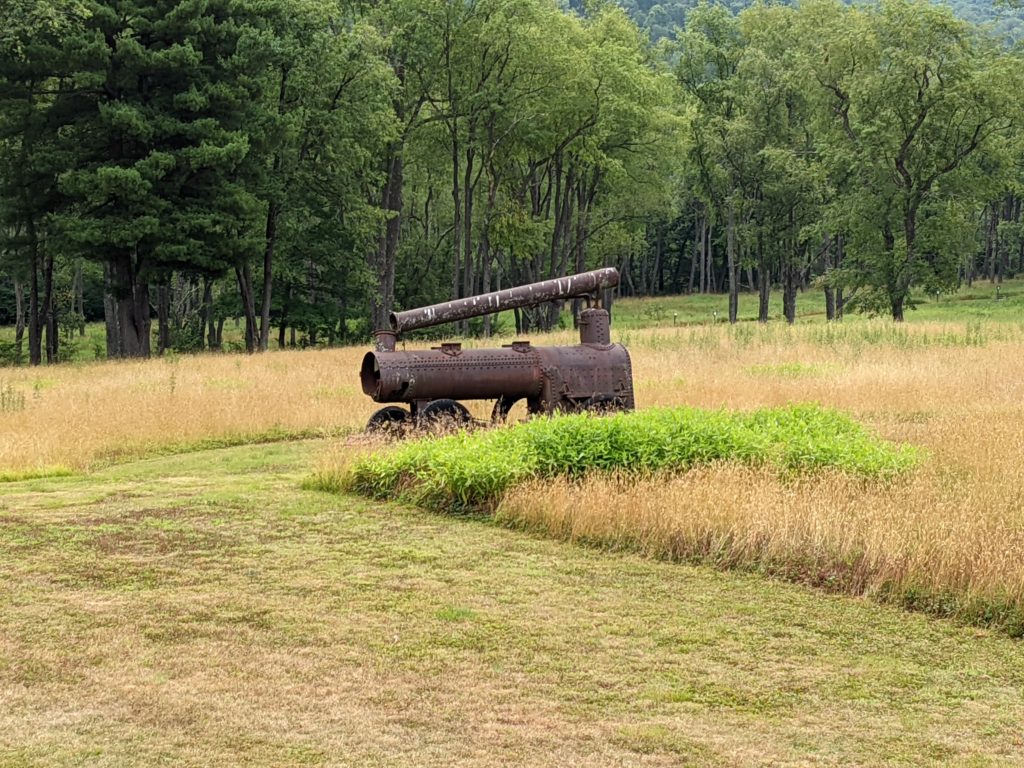
Volunteers mow the lawn where the city streets used to be.
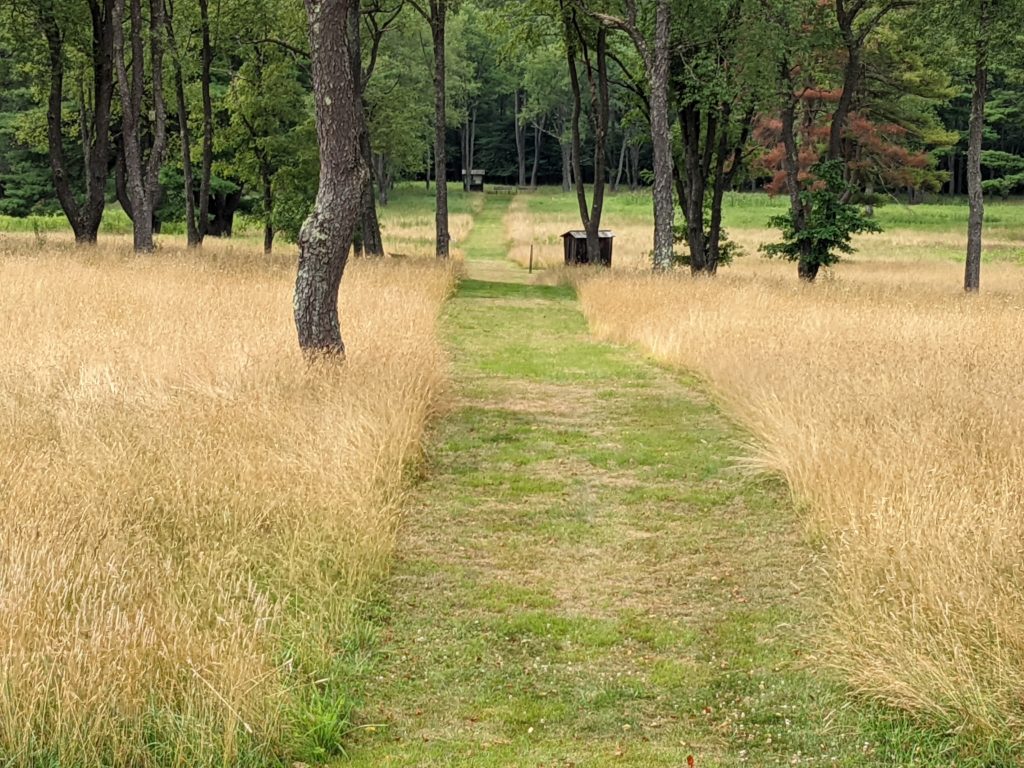
This occasionally underwater bridge near Tionesta, PA, was our next checkpoint. The Nebraska Bridge was built over Tionesta Creek, and due to a nearby dam, the deck of the bridge is often well underwater. At the time of the rally, the water level was but a couple of feet away from the bottom of the bridge.
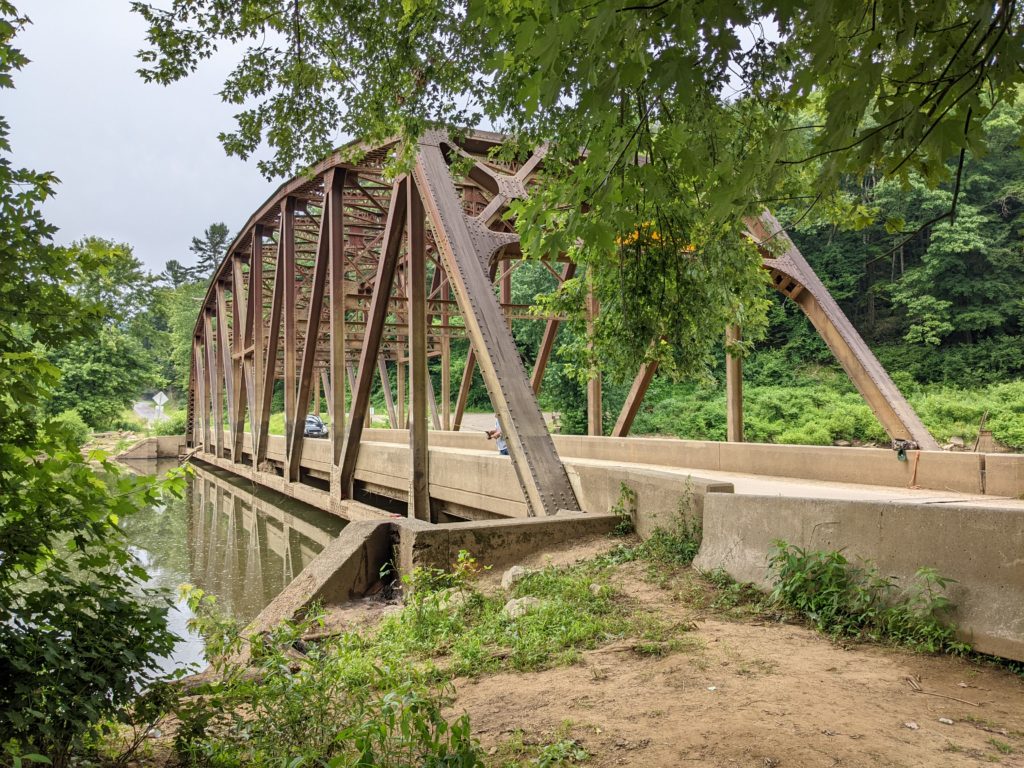
We weren’t quite sure what to make of the next checkpoint: “Endeavor.” In Endeavor, PA. Many of us took a photo of the sign at the town’s border.
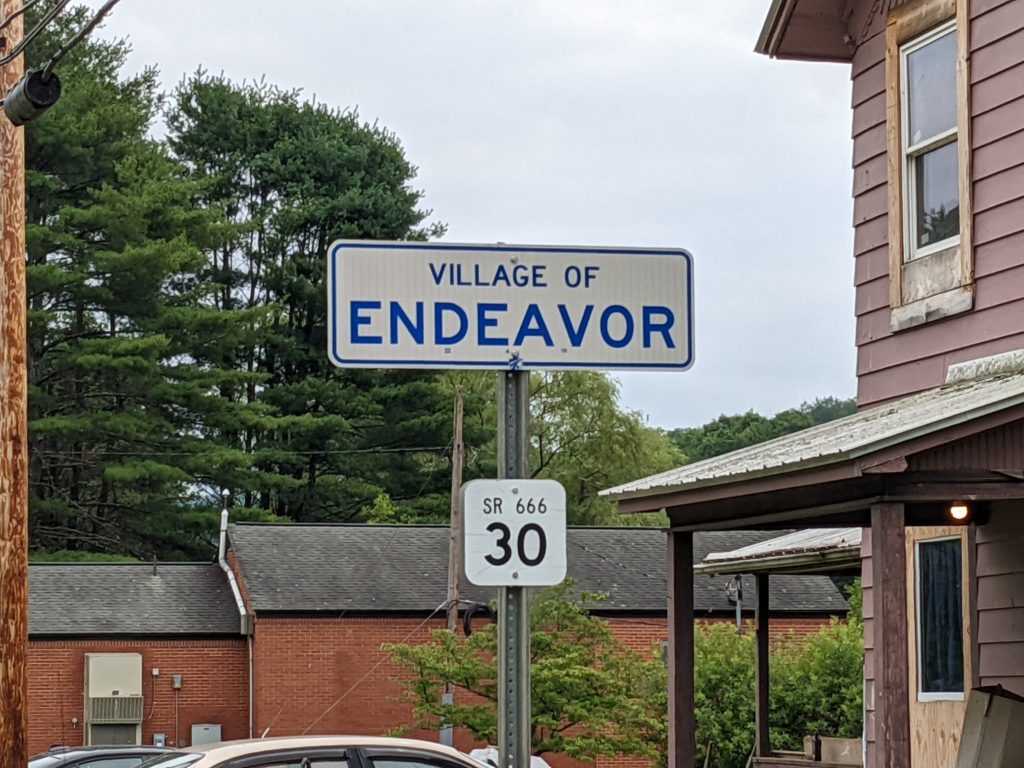
Endeavor also marked the beginning of “Get your kicks on Route 666.” Our second stop on this state road was the Blue Jay Creek Rd. bridge. It was a very plain looking modern bridge. However, it replaced an existing bridge just a few years prior, as the original bridge (called the Lynch Bridge) was built in 1905 and was in a state of disrepair.
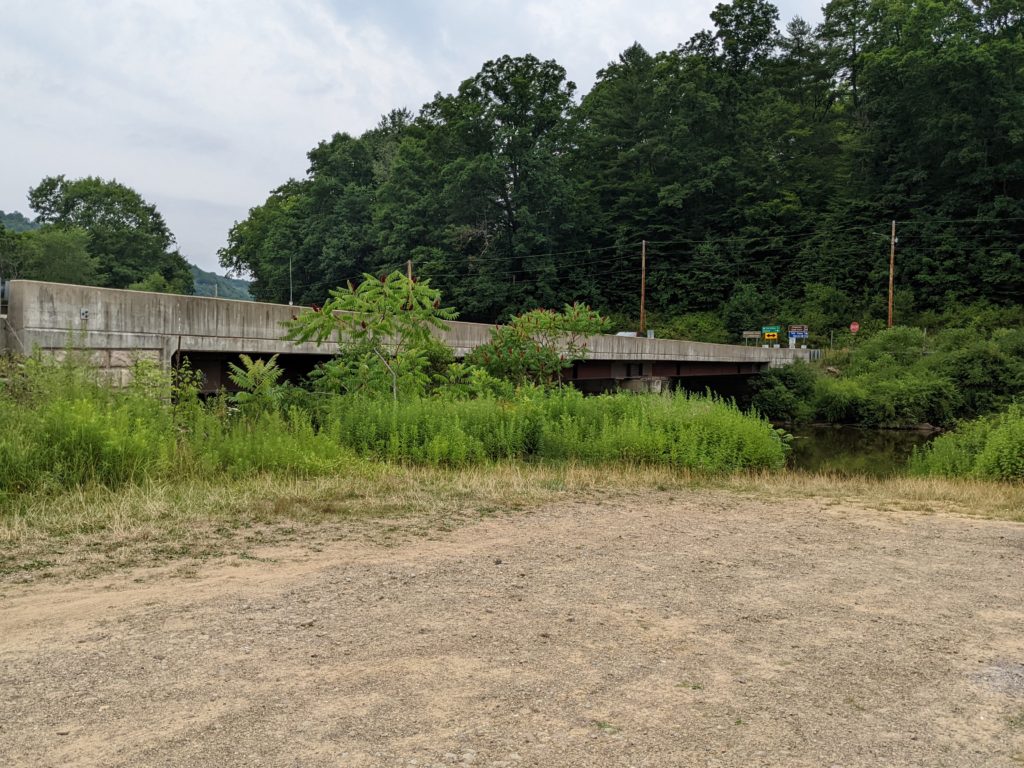
The original bridge:
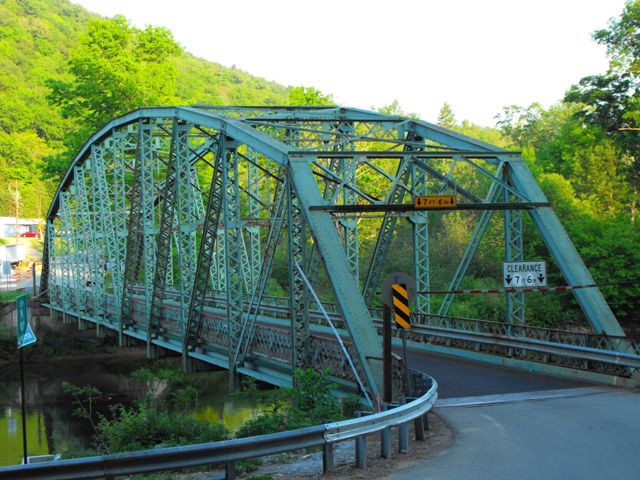
Our final Route 666 stop was the Shaw House, now a bar/restaurant in Sheffield PA.
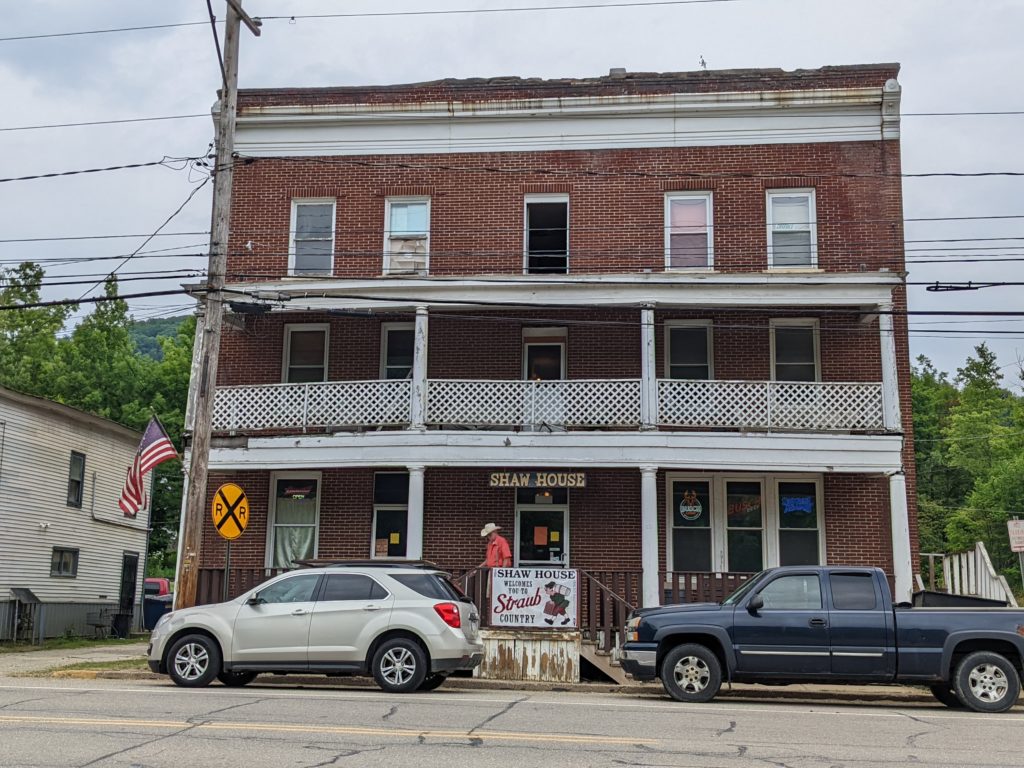
Our route took us next to the New York state line, and the marker therein, which was also the 42nd Parallel.
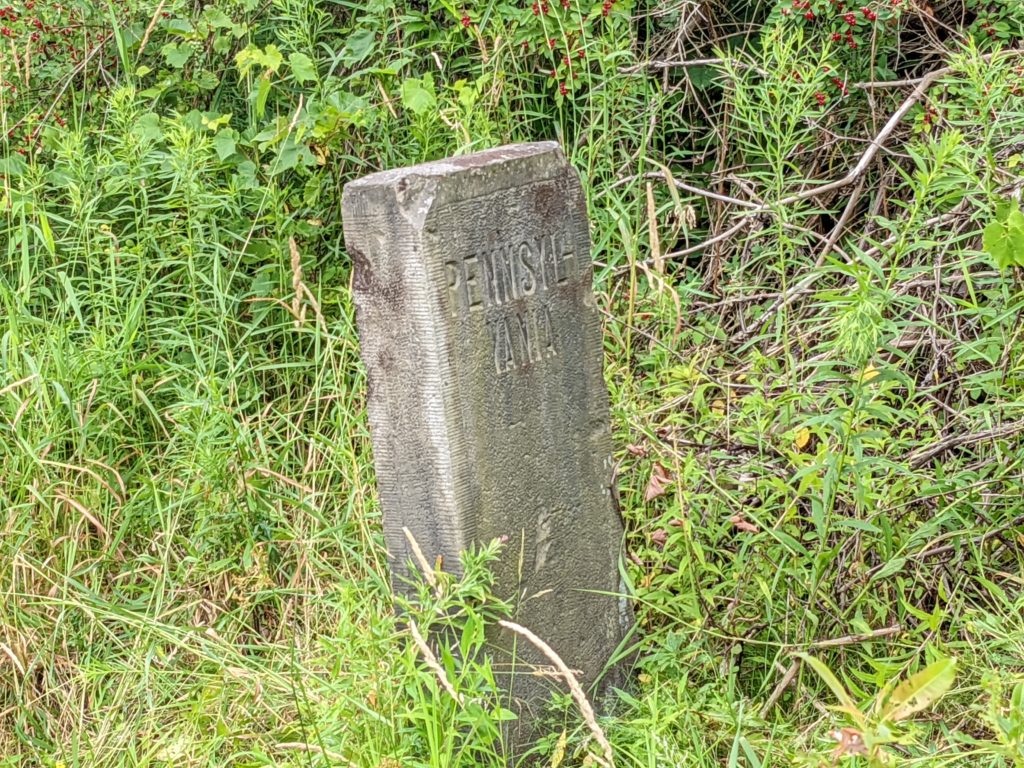
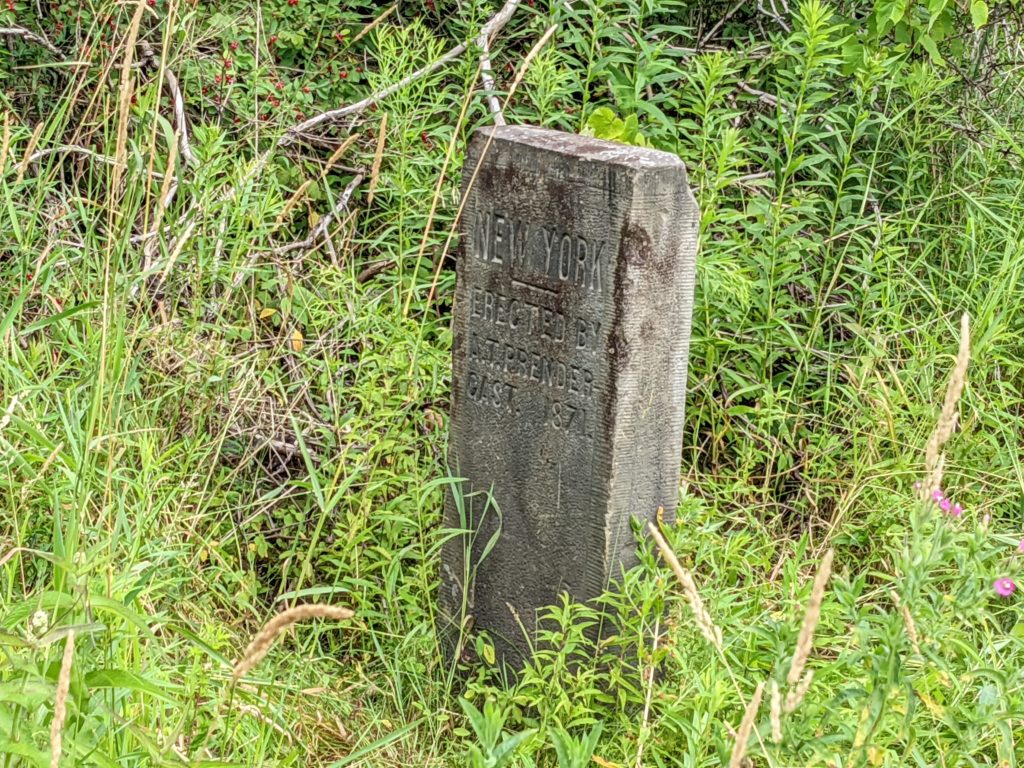
Under way in New York, we traveled to our first checkpoint in the state, located in Jamestown. Due to an incorrect coordinate on a site that listed the location of the historical marker for the building, many of us ended up on the wrong street, wondering which of the nearby buildings was the correct one.
We had to find the Jamestown Furniture Exposition Building. At first, I couldn’t find it, but a building in front of me had its own marker, and was the first woolen mill in the area.
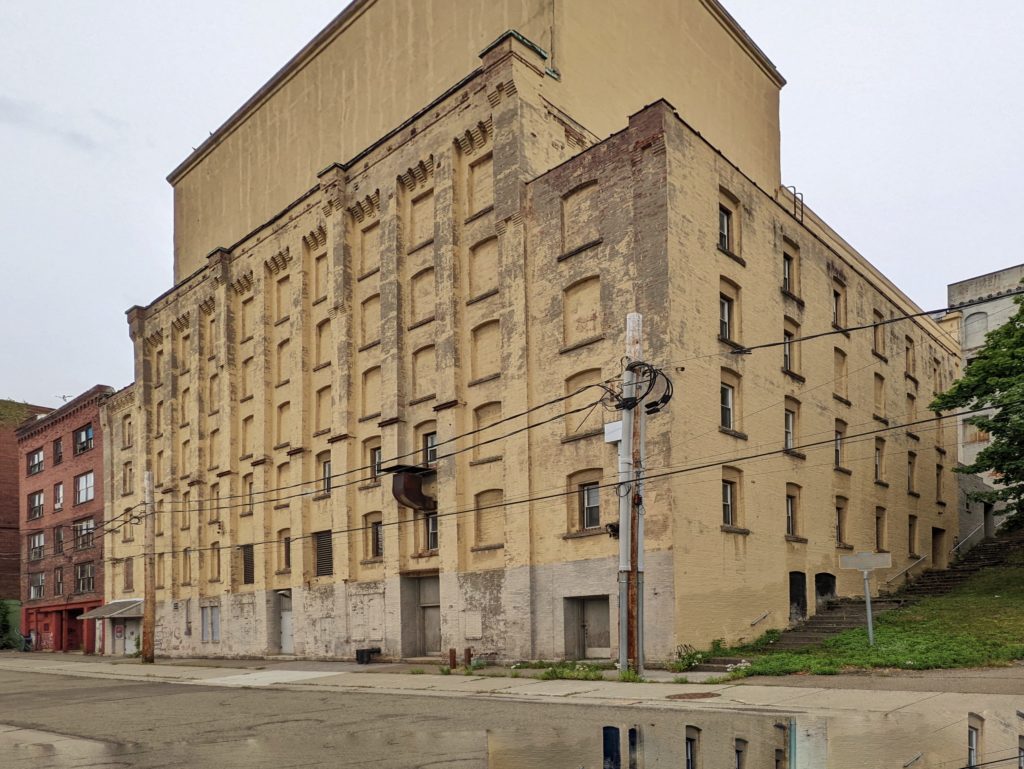
But that’s not good enough for a checkpoint. Finally, looking down the street and spotting a building a couple of blocks away, which matched an online photo I had found the previous evening, this is what I found:
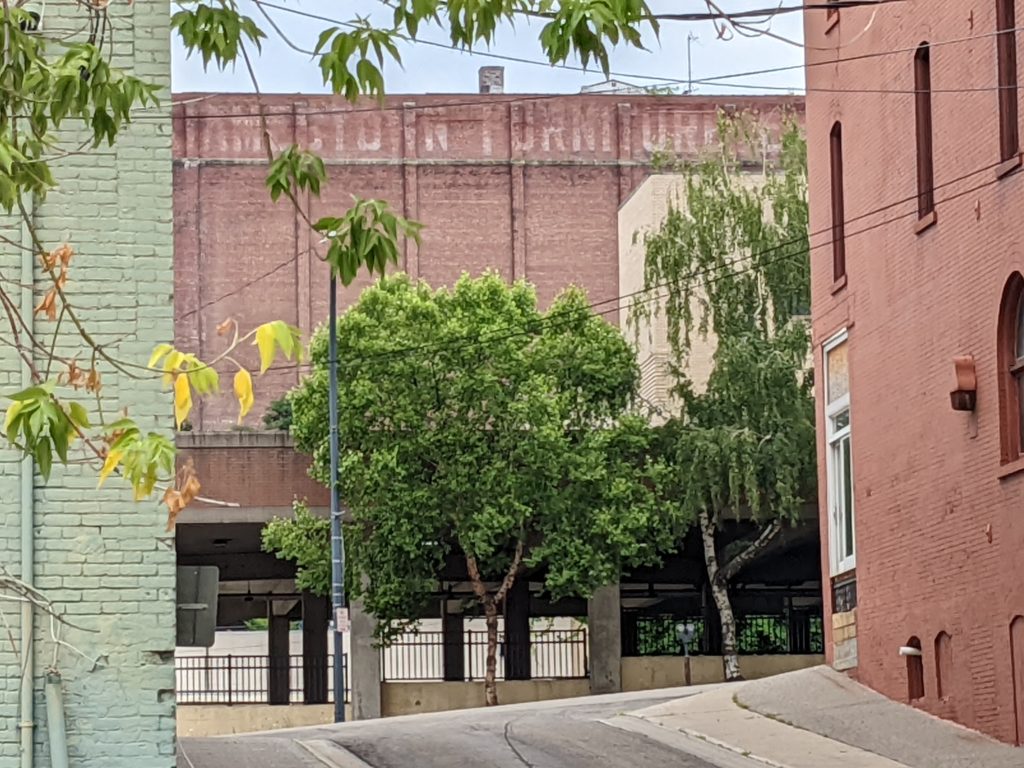
That was it. I was determined to find the proper address and get a better photo. Winding through the downtown city blocks, though, I came across this:
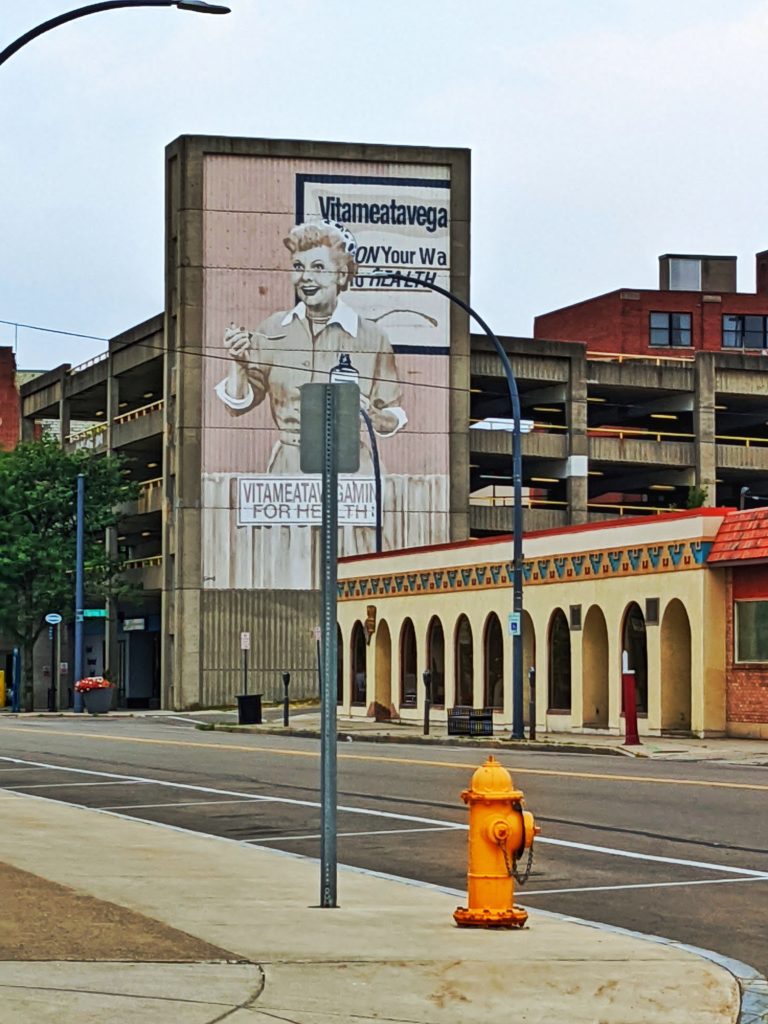
It turns out that Jamestown was the birthplace of Lucille Ball (I’m not one to keep track of where celebrities came from), and there is a Lucille Ball/Desi Arnaz museum at this location. Relaying this tidbit back home, I was told we need to visit this in the future.
Anyhow, I found the Jamestown Furniture Exposition building. Opened in 1917, it was the building that housed displays of all the furniture that was produced in the region, as the city was once given the nickname The Furniture Capital of the World due to its bustling furniture industry from the early 1800s to the mid 1900s. Today, it exists as office space.
